Spilling the Tea: Life and Wildlife in North Bengal’s Tea Estates
First published on
September 01, 2021
By Anish Paul, Nitish Kumar &Trisa Bhattacherjee
Endless greens, serene skyscapes, and basket-wielding women plucking tea leaves are amongst the beautiful sights that await a visitor to North Bengal. However, as you walk through the pruned tea bushes, you’re met with a harsh truth. Strain your ears, and you will hear: “Babu Bole Kam Kam/ Saheb Bole Dhori An/ Sardar Bole Libo Pither Cham” (Babu forces us to work, Saheb asks us to fetch men, and Sardar threatens to beat us). For many tea plantation workers, this is how life goes on in this picturesque tea belt.
Leaves from the Past
The history of tea plantations in India began when tea became a popular daily beverage amongst the middle and the lower middle classes of Britain. Initially, tea was smuggled from China and planted near the foothills north of Delhi, but it wasn’t successful. In 1823, British officials found wild tea growing in Assam, and they grabbed the opportunity to grow tea here, at lower prices than China.
When the first tea bushes were planted in Assam in 1837, it heralded an era of degradation and decay for local biodiversity. Thousands of acres of virgin forest were cleared for tea plantation in Assam and North Bengal, the remnant fragments of which still persist. As disinterested locals were involved in their own agricultural pursuits and the local economy, entire families from tribal communities from the Chhotanagpur plateau and other places were brought here as labourers. By 1897, 1,93,000 acres of land in North Bengal was under tea plantation, and Darjeeling saw an increase of 387 per cent, from 10,000 acres in 1866 to 50,000 acres in 1905. With the end of the roaring 20s and the emergence of the Great Depression in the 1930s, the expansion of the tea industry came to a standstill.
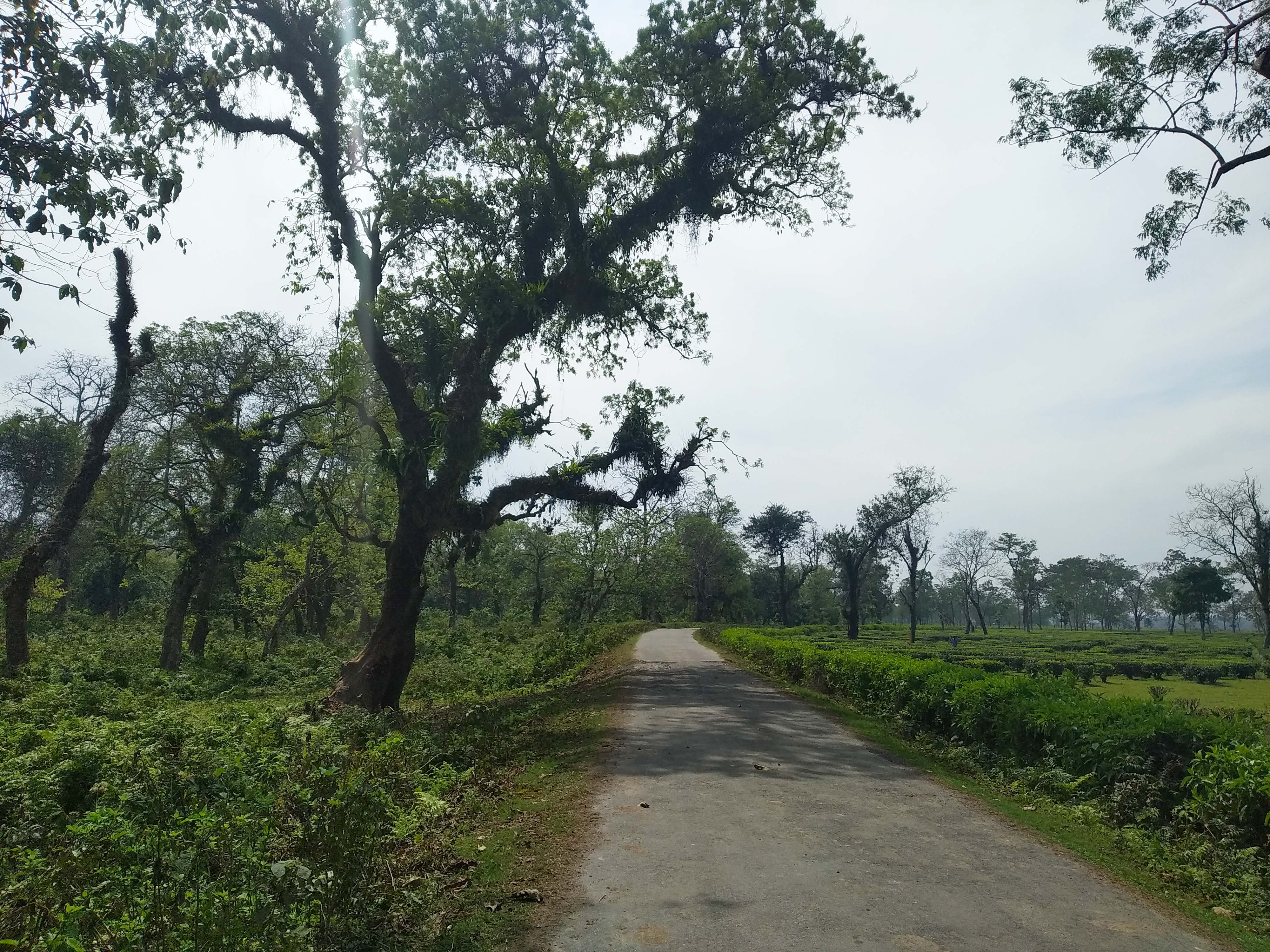
Forest and tea estate land-use matrix in north Bengal, which have a higher density of mixed-species shade trees compared to the ones in south India. Photo: Priyanka Das.
Who Grows Your Tea?
“Maybe this is what should happen to the poor,” says a tea-picker working in an estate.
Psychological stress and a sense of desperation prevail amongst many plantation workers. These communities are afflicted by illiteracy, conflict with wild animals, and alcoholism, and these issues often bleed into one another. Such as instances when drunk men come together to chase wild elephants.
Negligence by plantation operators is irrefutable, and many workers are forced to live in unsanitary conditions with little access to even basic equipment such as gloves and boots to protect them from the chemicals that the plantations demand.
Though some tea gardens have pucca creches with proper amenities, many are little more than makeshift arrangements where children are kept in tents or bamboo huts with untrained attendants. A few tea estates have no arrangements for their workers’ children at all, and of those that exist, only a handful provide milk to their wards. It is no wonder then that the sight of a woman bent over the tea bushes with a child strapped to her back is common. With wages lower than the minimum wage for unskilled labour, many plantation workers are also deprived of sufficient rations and fuelwood from estate operators.
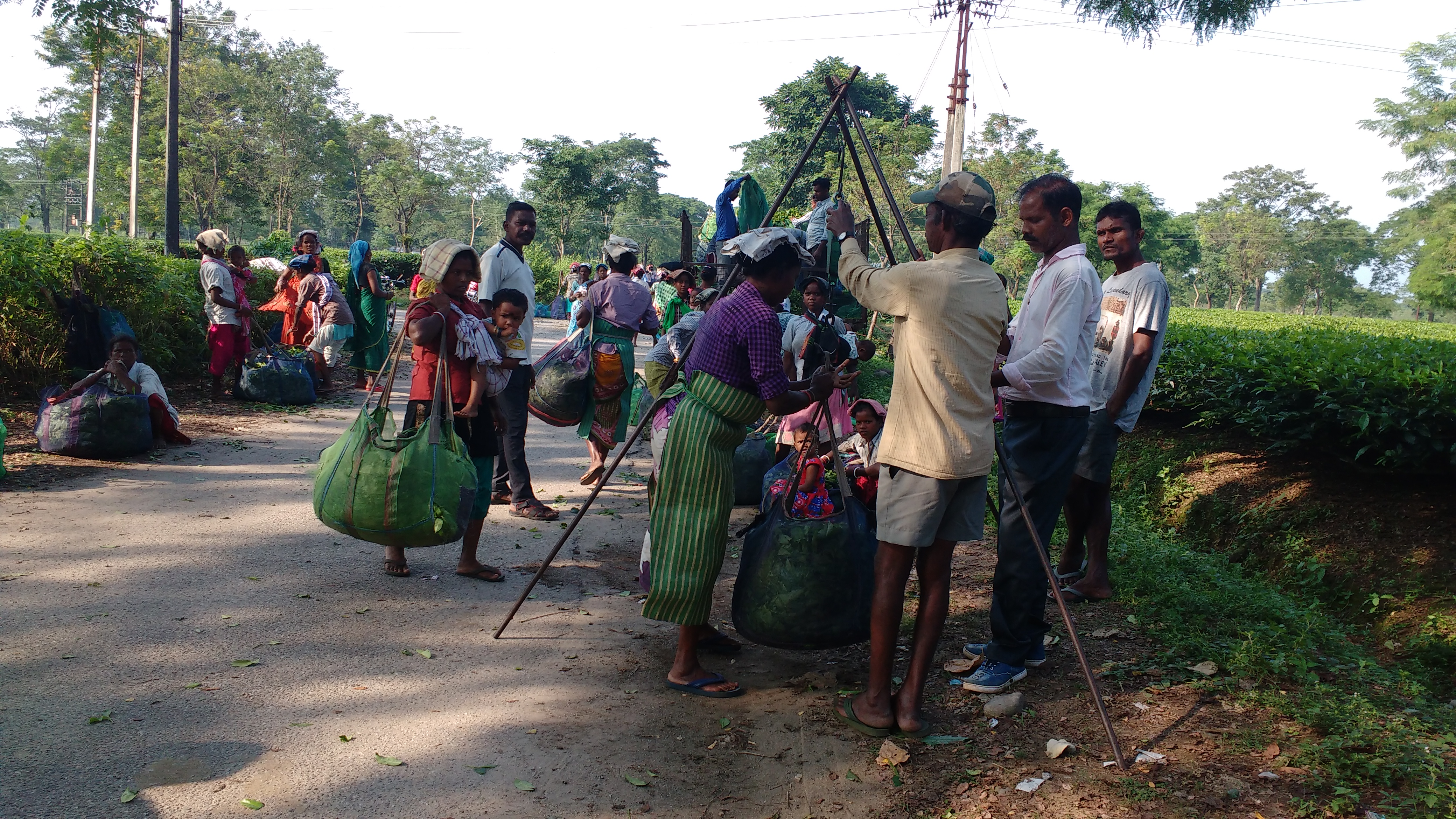
Tea leaves being collected from women tea plantation workers. Photo: Priyanka Das
The tea sector is female-dominated, but the goddesses of plantations are doubly unprivileged. Menstruating women have no facilities to change their napkins during working hours. As tea-pluckers, women are more prone to leopard encounters. And anaemia, high parity, and early marriage remain lingering issues. Human trafficking too remains an ominous threat because of North Bengal’s proximity to several international borders.
The Plantation Labour Act (1951) was passed to regulate terms between employers and labourers. It promised deprived labourers education, good health, sanitation, recreational activities, and housing. Although implemented to some extent, there remain many loopholes. Nearly 90 per cent of tea labourers are from marginalised classes, and do not get equal representation in the unions. Many union leaders treat them as inferior and thus they continue to be exploited despite the existence of these associations for their welfare. Long after the British departed, the tea belt still wears colonial colours.
These tea estates are also a melting pot of ethnicities. The communities that were relocated here by the British, carried with them their distinct cultures from different parts of the country. These mingled and assimilated, giving rise to a culture unique to the tea workers. The art forms, which once used to be a celebration of nature and divinity, evolved to chronicle their struggles.
‘Banain Dili Kamin Kuli/ Tangail Dili Pithe Jhuli/ Jhuli Tangail Bhikhari Banaili/ Nithuro Shyam, Jonome Jonome Kandaili’ (You made me a tea worker, you made me carry sacks on my back and made me beg; oh merciless God, you only made me cry over and over) go the lyrics of one song.
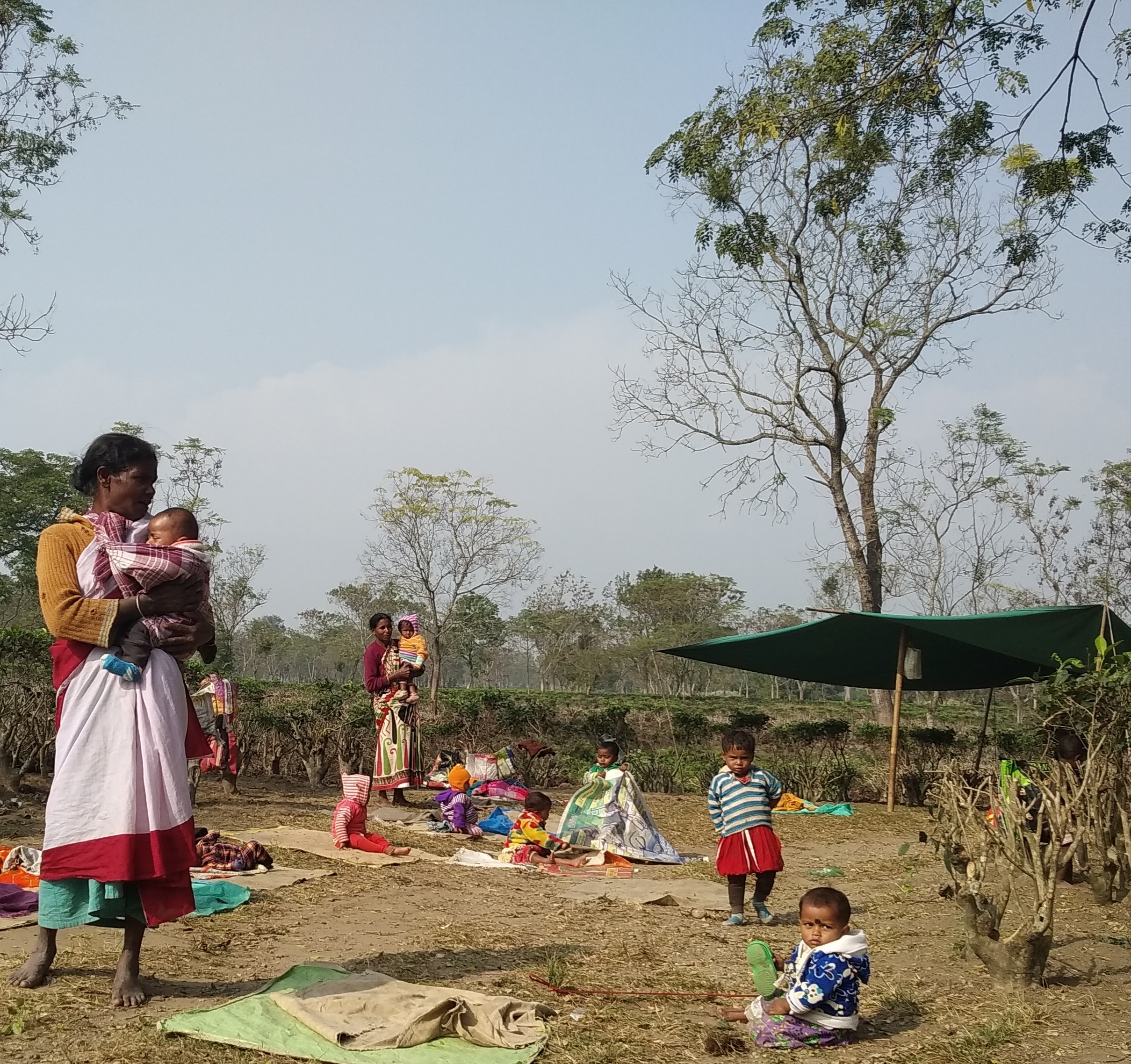
Though some tea gardens have pucca creches with proper amenities, many are little more than makeshift arrangements where children are kept in tents or bamboo huts with untrained attendants. Photo: Priyanka Das.
Cheek by Jowl
Tea estates can be biodiverse human-modified landscapes, especially in North Bengal. Unlike tea plantations in south India which are mostly grown under Silver Oak trees, tea estates in the northeast are shaded by a diversity of trees. The fragmented tea-forest mosaic of these parts has allowed an assemblage of diverse fauna to survive.
Leopards have adapted to tea estates as the bushes provide ample cover, and prey is plenty in the form of livestock. Wild elephants use the estates as passage to move from one forest patch to another. And many small animals like Indian pangolins, jungle cats, leopard cats, spectacled cobras and common kraits find shelter within these habitats.
Coexistence isn’t always harmonious though, and sometimes wildlife encounters lead to substantial property damage and, in few cases, human lives. When negative interactions reach a certain threshold, the Forest Department comes under immense pressure to translocate “problem” leopards to other areas. Translocation does not always work out well as a translocated leopard may cause more damage or try to return to its original territory.
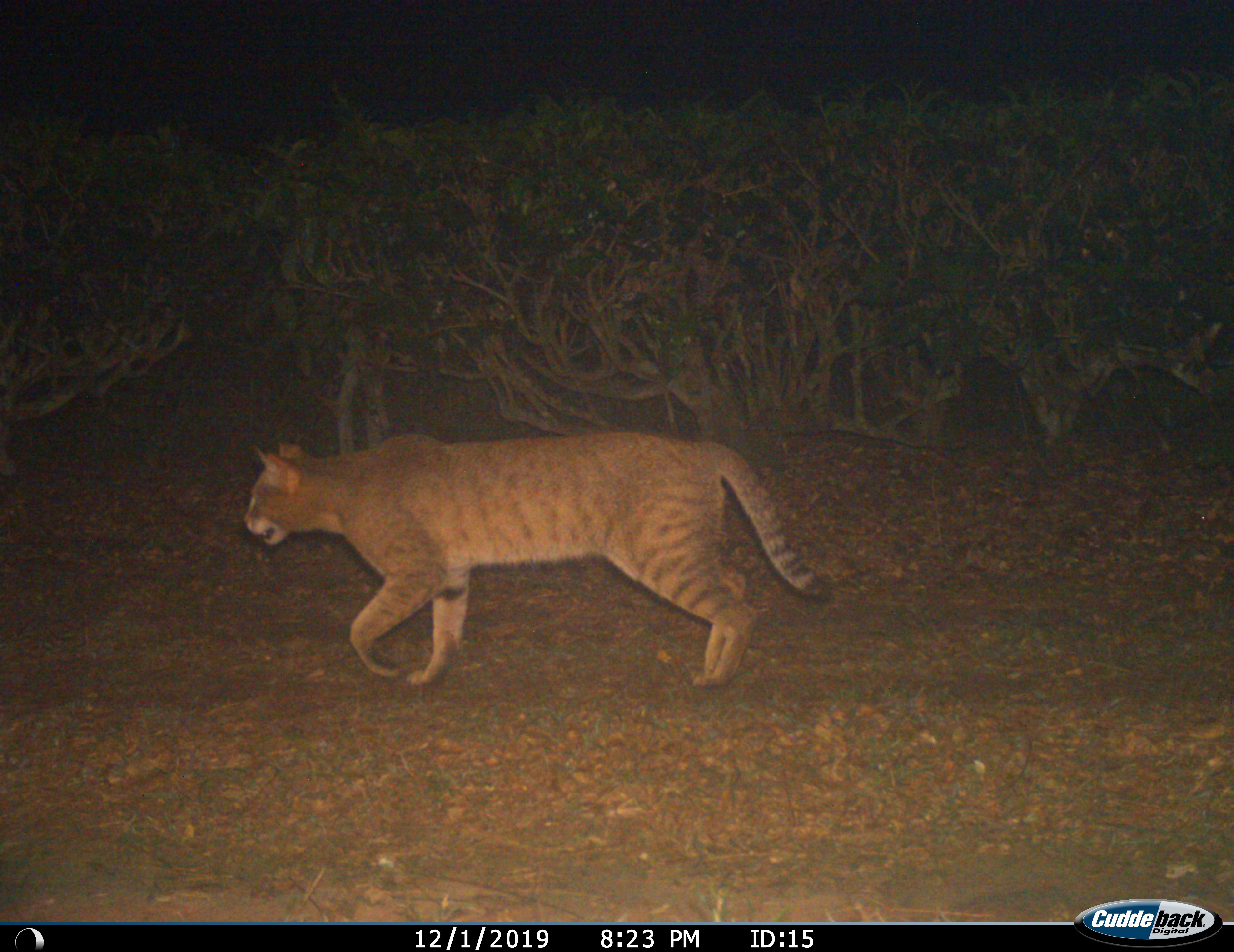
A jungle cat strolling in a tea estate. Photo: Aritra Kshettry.
The Coexistence Project was established in 2013 to nurture safer shared spaces among wildlife and humans. The project studies the ecology and behaviour of the two keystone mammals in the area to understand how they adapt to this ever-changing landscape. The West Bengal Forest Department also plays an active role in protecting the extraordinary wildlife of the region. Apart from providing logistical support to wildlife researchers, the department conducts regular awareness programs in the tea estates and villages. The department has thankfully abandoned the former practice of “rescuing” leopard cubs from nullahs in the tea gardens. Instead, measures are now taken to ensure safe passage for a mother leopard to her cubs. Quick Response Teams or QRTs have also been formed, and these train local people to act as the first line of defence against elephant intrusion.
Several regional, national and international non-government organisations also contribute to the conservation of wildlife and wild habitats in this region. Society for Protecting Ophiofauna and Animal Rights (SPOAR), a Jalpaiguri based NGO, works towards safeguarding snakes. Society for Nature and Animal Protection (SNAP) has deployed early warning systems to track elephant movement in the Dooars region. Hathi-Sathi Foundation works to promote safe passage for wild elephants that move through tea estates in Darjeeling.
The Indo-German Biodiversity Program of GIZ, Nature and Wildlife Association, North Eastern Society for the Preservation of Nature and Wildlife, and Nature Environment and Wildlife all work within their means to promote coexistence in these modified landscapes, thus making an effort to preserve the last remaining wildernesses of northern West Bengal. WWF-India, Wildlife Trust of India, Wildlife Conservation Society-India, and Centre for Wildlife Studies all support projects in this landscape with funding and logistical help.
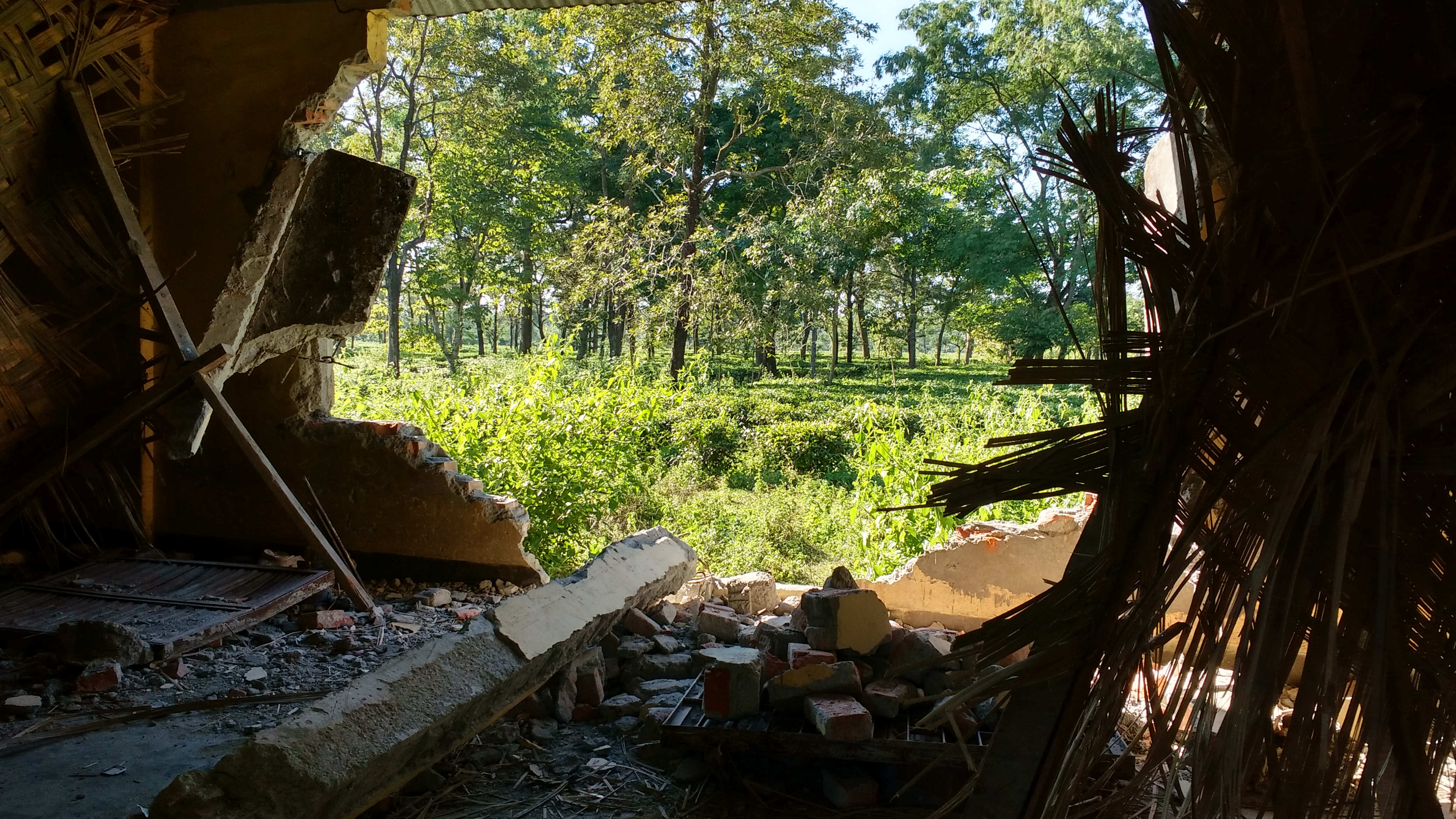
A house wall broken by an elephant within a tea estate. Photo: Priyanka Das.
The Boiling Point
Even though North Bengal’s tea industry is one of the oldest in the world, it currently faces uncertainties. There has been a high domestic demand for tea, but the inability to enhance production has resulted in falling exports. Consequently, many tea estates have ceased operations. This has compelled now redundant workers to seek out new livelihoods, and they often illegally venture into neighbouring forest patches to collect fuelwood and other natural resources. In some cases, such forest use has led to the complete degradation of habitat. While closed estates create favourable habitats for wild animals, this also increases negative interactions with humans.
Rightfully, growing unrest among tea estate workers about their poor living conditions is another reason that the tea industry is in crisis. Other challenges that have gripped the industry are the high input costs but no significant increase in the selling price, the old age of the tea bushes, lack of modern infrastructure for better production and quality, adulteration during manufacturing, and lack of marketing of tea products. The intense use of chemical pesticides has affected the quality of tea and acts as an environmental pollutant. Climate change threats also loom large, and there is evidence of higher precipitation leading to reduced growth and quality of the tea produced.
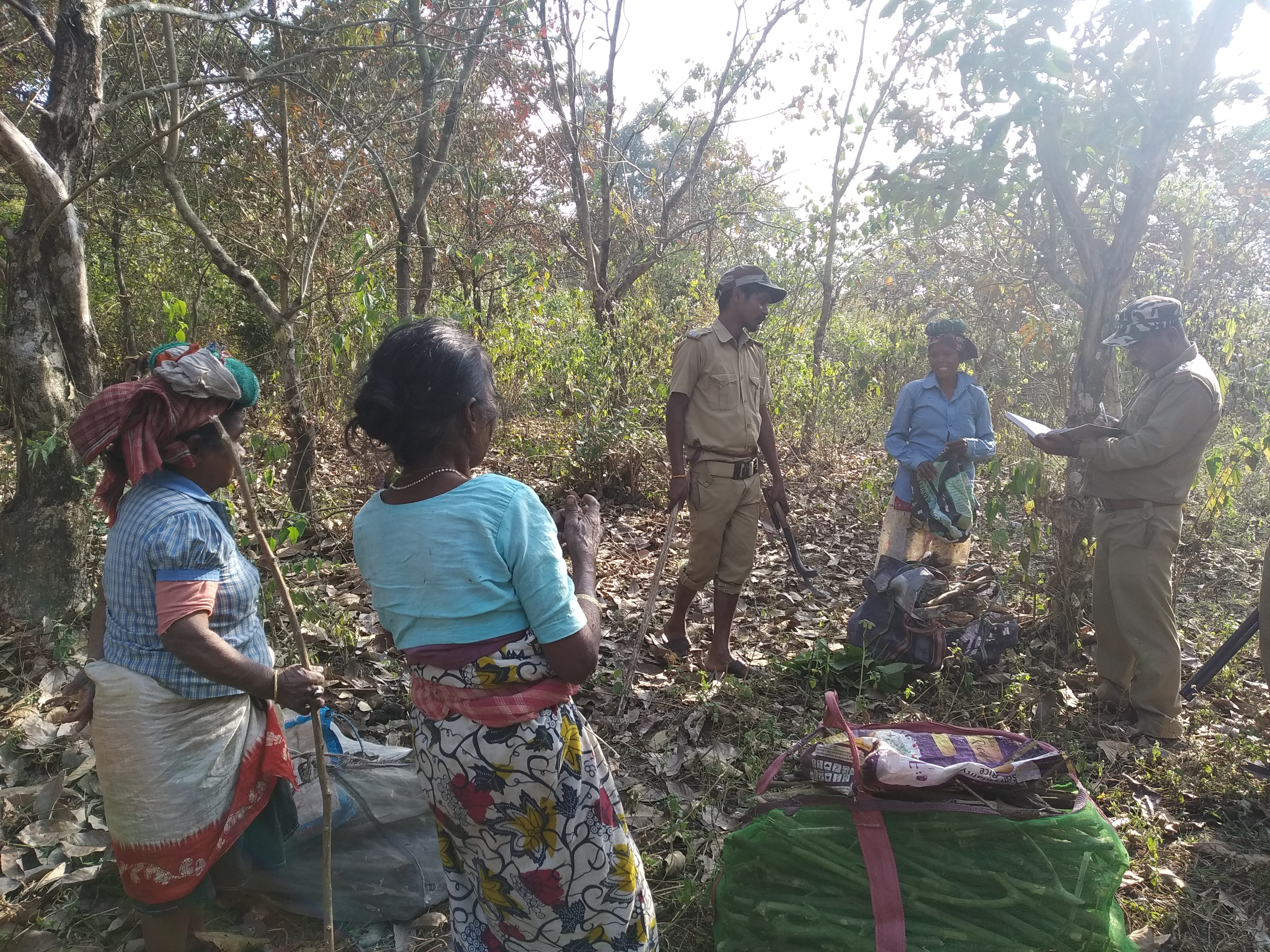
Falling tea exports have forced tea plantation workers to seek out different livelihoods and collect firewood and other natural produce from forests. Photo: Priyanka Das.
The cup of tea that you drink every day has many facets to it. It offers livelihoods to people and affects biodiversity conservation. Although we have lost irreplaceable tracts of natural forest to tea plantations there is a silver lining. Today these plantations serve as wildlife habitats and corridors and can be managed appropriately towards this end. We need focused research on tea plantations, not just to understand the biodiversity they harbour or facilitate shared spaces, but also to better the working conditions of those who labour here.
For us to make this a reality, we can continue to sip our tea but we need to make this conversation part of our daily “chai pe charcha.”
Anish Paul, Nitish Kumar and Trisa Bhattacherjee are interns with The Coexistence Project. Anish is interested in studying mammals and human dimensions to conservation issues; Nitish is keen on the behavioural ecology of small carnivores; and Trisa is committed to the conservation of large mammals and community outreach.
References
[1] Kshettry, A., Vaidyanathan, S., Sukumar, R. & Athreya, V. (2020). Looking beyond protected areas: Identifying conservation compatible landscapes in agro-forest mosaics in north-eastern India. Global Ecology and Conservation. 22. e00905.
[2] Xaxa, V. (2019) Need for Restructuring the Tea Plantation System in India. Economic & Political Weekly.
[3] Rajbangshi, P.R. & Nambiar, D. (2020). “Who will stand up for us?” the social determinants of health of women tea plantation workers in India. International Journal for Equity in Health. 19. 29.
[4] Laskar, N. & Thappa, S. (2015). A study on the present scenario of tea industry in Assam-Challenges ahead. Indian Journal of Applied Research. 6. 533-537.
[5] Roy N.C., Biswas D. (2019), Labour Welfare Practice and Ownership Pattern of Tea Plantations in West Bengal, India; A Journal of Composition Theory, Volume XII Issue VII: 344.






